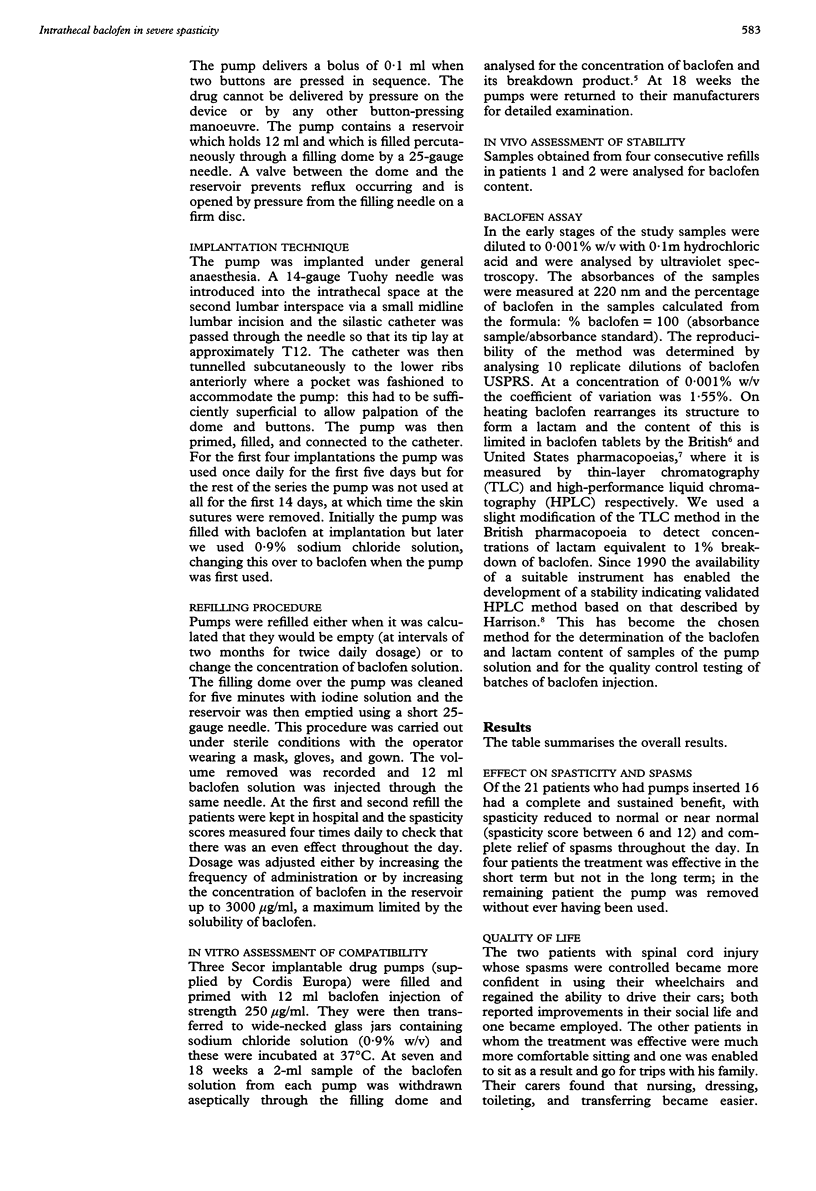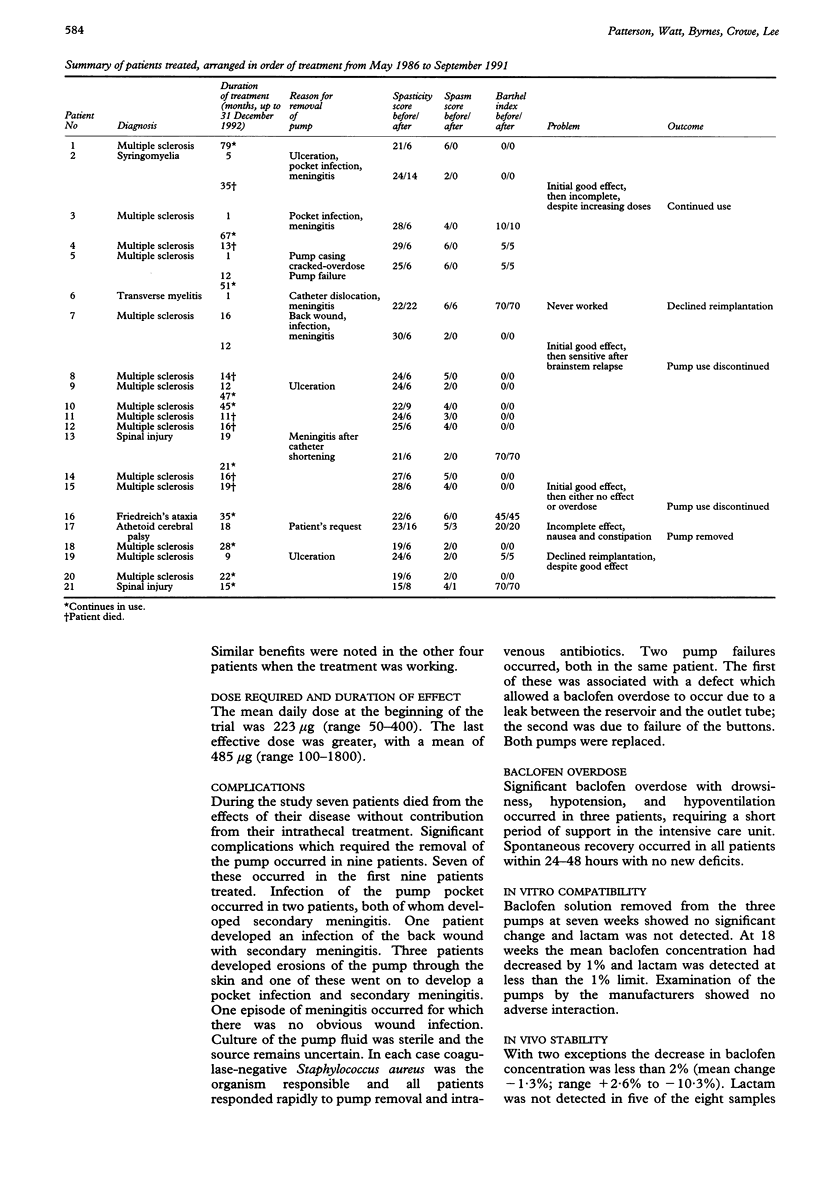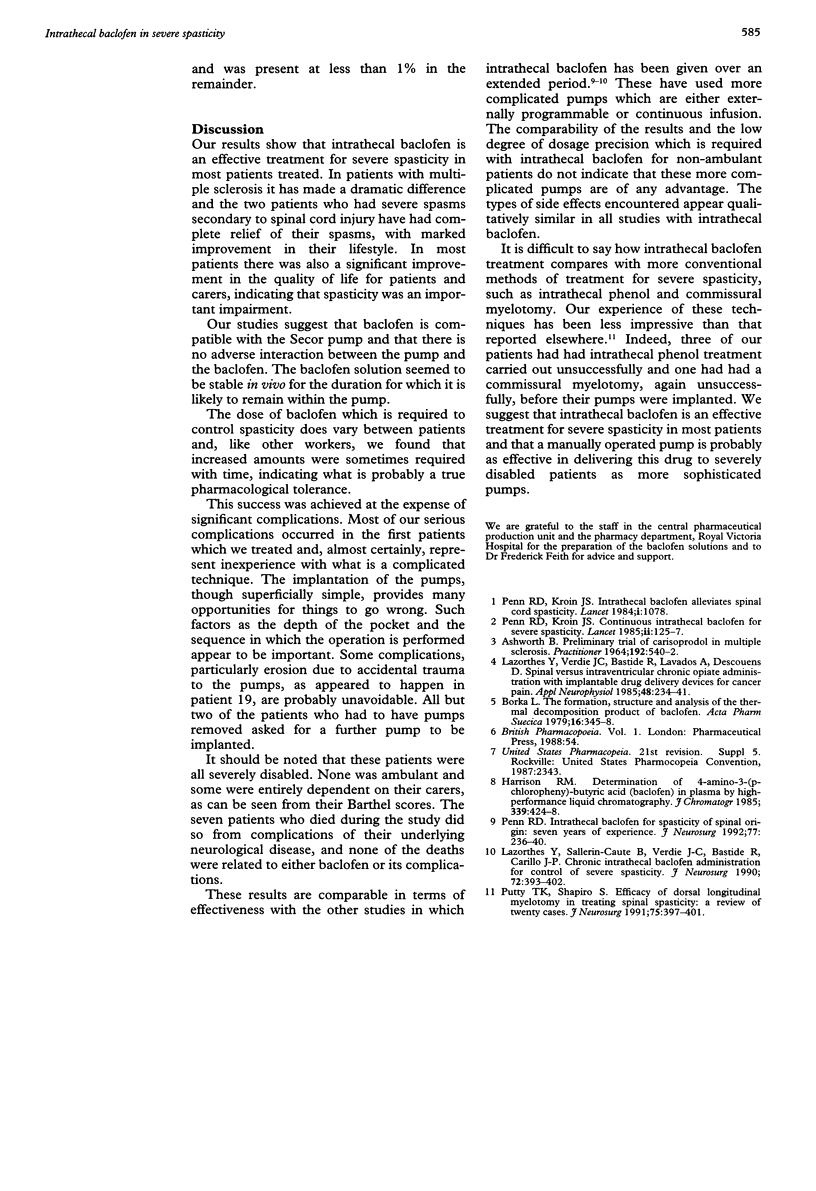Abstract
Intrathecal baclofen abolishes spasticity in many patients with neurological diseases but there are few studies on its long-term effectiveness. Since 1986 a manually operated subcutaneous pump has been used to deliver baclofen intrathecally in 21 patients with a follow up of at least one year. Most patients had multiple sclerosis and all were wheelchair-bound. Sixteen patients had a complete and sustained benefit. In four other patients the treatment was effective in the short term but not in the long term. In the remaining patient the pump never worked. Complications included meningitis, pump failure, erosion through the skin, and baclofen overdose. Nevertheless, only three patients have asked to discontinue the treatment. We conclude that intrathecal baclofen, delivered by a manually operated implanted pump, is an effective treatment for severe spasticity in most patients.
Full text
PDF



Selected References
These references are in PubMed. This may not be the complete list of references from this article.
- ASHWORTH B. PRELIMINARY TRIAL OF CARISOPRODOL IN MULTIPLE SCLEROSIS. Practitioner. 1964 Apr;192:540–542. [PubMed] [Google Scholar]
- Borka L. The formation, structure and analysis of the thermal decomposition product of baclofen. Acta Pharm Suec. 1979;16(5):345–348. [PubMed] [Google Scholar]
- Harrison P. M., Tonkin A. M., McLean A. J. Determination of 4-amino-3-(p-chlorophenyl)butyric acid (baclofen) in plasma by high-performance liquid chromatography. J Chromatogr. 1985 May 3;339(2):424–428. doi: 10.1016/s0378-4347(00)84675-7. [DOI] [PubMed] [Google Scholar]
- Lazorthes Y., Sallerin-Caute B., Verdie J. C., Bastide R., Carillo J. P. Chronic intrathecal baclofen administration for control of severe spasticity. J Neurosurg. 1990 Mar;72(3):393–402. doi: 10.3171/jns.1990.72.3.0393. [DOI] [PubMed] [Google Scholar]
- Lazorthes Y., Verdie J. C., Bastide R., Lavados A., Descouens D. Spinal versus intraventricular chronic opiate administration with implantable drug delivery devices for cancer pain. Appl Neurophysiol. 1985;48(1-6):234–241. doi: 10.1159/000101133. [DOI] [PubMed] [Google Scholar]
- Penn R. D. Intrathecal baclofen for spasticity of spinal origin: seven years of experience. J Neurosurg. 1992 Aug;77(2):236–240. doi: 10.3171/jns.1992.77.2.0236. [DOI] [PubMed] [Google Scholar]
- Penn R. D., Kroin J. S. Continuous intrathecal baclofen for severe spasticity. Lancet. 1985 Jul 20;2(8447):125–127. doi: 10.1016/s0140-6736(85)90228-4. [DOI] [PubMed] [Google Scholar]
- Penn R. D., Kroin J. S. Intrathecal baclofen alleviates spinal cord spasticity. Lancet. 1984 May 12;1(8385):1078–1078. doi: 10.1016/s0140-6736(84)91487-9. [DOI] [PubMed] [Google Scholar]
- Putty T. K., Shapiro S. A. Efficacy of dorsal longitudinal myelotomy in treating spinal spasticity: a review of 20 cases. J Neurosurg. 1991 Sep;75(3):397–401. doi: 10.3171/jns.1991.75.3.0397. [DOI] [PubMed] [Google Scholar]


